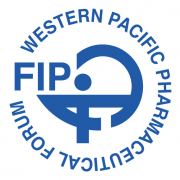Ostrich antibodies can protect humans from viruses
Ostrich antibodies can protect humans from viruses
The humble ostrich: savior of the human race
http://www.jst.go.jp/seika/images/dottedline_01.gif) repeat-x;”>
In 2009, the World Health Organization (WHO) reported 15,000 or more deaths due to a pandemic of a new strain of influenza. The emergence of new strains of influenza is a constant danger, and humanity has no choice but to continue the struggle against this unseen enemy. However, a powerful ally in this fight has appeared: the ostrich. Ostrich eggs have enabled the mass production of antibodies effective in fighting influenza.
Antibodies are created when antigens such as viruses and bacteria invade the bodies of vertebrate animals; when the same antigens invade a subsequent time, the antibodies bind to them, thus rendering them harmless. Since we can use these antibodies to treat many diseases if we can create them in animals other than humans, research so far has been conducted using mice, rabbits, chickens, and other animals. However, because production costs are extremely high and mass production is difficult, we need to develop new technologies for this. It was Professor Yasuhiro Tsukamoto of the Graduate School of Life and Environmental Sciences at Kyoto Prefectural University who first set his sights on ostriches. Professor Tsukamoto, who had originally been conducting research on infectious diseases in poultry, realized that byutilizing ostrich eggs, which are 25-30 times as larger than chicken eggs and strongly effective against infectious diseases, mass production of antibodies was possible.
Even only the prototype reagent, the market scale for antibodies is around 120 billion yen in Japan alone. If further applications for these antibodies can be found in more diverse fields, they hold the promise of generating business with incalculable market value.
http://www.jst.go.jp/seika/images/blueline_01.gif); background-attachment: initial; background-size: initial; background-origin: initial; background-clip: initial; background-position: initial; background-repeat: no-repeat;”>Enabling mass production of ostrich eggs

http://www.jst.go.jp/seika/images/dottedline_01.gif) repeat-x;”>

Ostrich eggs are around 30 times larger than chicken eggs. Moreover, ostriches lay close to 100 eggs per year, which enables a previously unthinkable reduction of costs. For example, approximately 4 grams of high-grade antibodies can be refined from the yolk of one ostrich egg. Thus, 100 eggs yield 400 grams of antibodies, which represents successful mass production. To achieve the same amount using rabbits, around 800 rabbits would be required.
http://www.jst.go.jp/seika/images/blueline_05.gif); background-attachment: initial; background-size: initial; background-origin: initial; background-clip: initial; background-position: initial; background-repeat: no-repeat;”>The vital energy of the ostrich? The amazing power of ostrich antibodies
http://www.jst.go.jp/seika/images/dottedline_01.gif) repeat-x;”>
But the ability to mass-produce is not the only amazing thing about ostrich antibodies. Of course, this research was originally undertaken with a view to mass production; but as research has progressed, other concomitant benefits have been observed.
The first point is the strength of ostrich antibodies. When we say that ostrich antibodies are strong, we mean they have an overwhelming ability to neutralize viruses in comparison to conventional antibodies. Ostrich antibodies are about 20 times more potent at combating viruses than antibodies created from chicken eggs. This is thought to have some bearing upon the strong natural immune system of ostriches. The second point is resistance to heat. Previous antibodies have had almost no resistance to heat, which limited their applications in other fields. However, ostrich antibodies are strongly heat resistant, and it is now clear that they can be utilized in a diverse range of manufactured products. The third point is the uniform quality of the antibodies. Depending on the differences of individual animals (the antigens inside the body), antibodies will vary to some slight degree. Thus, with previous manufacturing methods it has been extremely difficult to create antibodies of consistent quality. However, there is extremely little variation in the ostrich antibodies mass produced from a single egg, which makes them useful from the viewpoint of quality control for use in manufactured products.
http://www.jst.go.jp/seika/images/blueline_06.gif); background-attachment: initial; background-size: initial; background-origin: initial; background-clip: initial; background-position: initial; background-repeat: no-repeat;”>Selling masks using ostrich antibodies


http://www.jst.go.jp/seika/images/dottedline_01.gif) repeat-x;”>


With confidence that ostrich antibodies, which hold such powerful promise, would also be a successful business venture, Professor Tsukamoto successfully applied to the JST Innovative Seeds Business Development Project in order to commence the production of ostrich antibodies in earnest. He established a company, Ostrich Pharma, to achieve a system for the mass production of ostrich antibodies, in cooperation with an ostrich farm located in Japan’s Hyogo Prefecture.
This company is undertaking business development of a diverse range of manufactured products using ostrich antibodies. Naturally, the first theme is preventing influenza virus pandemics. The first commercial product released was the antibody mask. Masks are effective in physically preventing viruses from entering the body, but viruses can live from 2 to 8 hours on the surface of conventional masks. Thus, when the mask is removed they can come into contact with the hands, which can be a vector of infection. However, the antibody mask is a groundbreaking product; if the mask is coated with ostrich antibodies, the antibodies will neutralize any virus coming into contact with the mask. This mask sold not only to local authorities and medical institutions, but is also on general public sale and has earned wide popular appeal. With future product development, perhaps ostrich antibodies will come to protect us on a daily basis in all sorts of ways.
